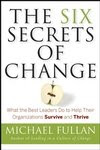Just to share, here are the directions for auto summary tool:
Here are the directions to put the Auto Summary Tool on your computer.
In the 2007 version
Click on the drop down on your quick access tool bar at the top left. Click on More Commands. Then a box opens, at the top of that page click on the drop down and go to All Commands. Then scroll down and find Auto Summary Tool. Highlight it and then click ADD. Finally click OK at the bottom (do not click reset). This will add your Auto Summary tool to the quick access toolbar at the top of all your word documents. Then you can highlight what you want to summarize, and pick which one you want: highlight main points, abstract, new document, etc.
In the 1999-2003 version
Auto Summary Tool is under the tools menu. Click on this drop down. Then click on the arrow at the bottom and the whole menu opens. Auto Summary tool is at the bottom of this menu.
Thanks for Margaret Ruppert for sharing this information with all of us!
Hope you find this helpful!
Amy
Monday, April 6, 2009
Friday, April 3, 2009
Sunday, March 29, 2009
Illiterate Adults
Forty-two million adult Americans can't read. * Source: Education Portal (September 2007) and one of the sessions that I attended had a huge impact on taking learning to read for granted. The presenters were adults who dropped out of school and never learned to read until their 30’s and 40’s (Sandra Johnson and David Clemmons). We must believe in our students and never give up on helping them learn how to read in school so they don’t end up becoming illiterate adults. I learned how people who can’t read often hide their disability by saying they don’t have their glasses or things to get them away from the pressure of someone finding out their secret. Especially as a School Literacy Coach, I feel the need to focus my energy on everything I can do to help teachers reach their students and have them be successful readers.
DO SOMETHING DIFFERENT TO KEEP YOUR STUDENTS FROM BECOMING ANOTHER STATISTIC! PLEASE!
DO SOMETHING DIFFERENT TO KEEP YOUR STUDENTS FROM BECOMING ANOTHER STATISTIC! PLEASE!
The Mindset of Effective Educators
Dr. Robert Brooks was a highly motivating and engaging keynote speaker. He talked about how we should be asking ourselves, “Starting today, ‘What is it that we can do differently to have a positive impact on the relationships we build with our students?’” especially those who are struggling with reading and learning. One of his suggestions was to be a charismatic adult, someone who must touch the heart as well as the mind. We can do this by making all children feel welcome in our presence.
http://www.drrobertbrooks.com/
Sometimes, we have no control over things that happen!
http://www.drrobertbrooks.com/
Sometimes, we have no control over things that happen!
Oral Reading Fluency
A common theme throughout the conference was oral reading fluency. I heard speakers discuss looking at Oral Reading Fluency Assessment results with a critical eye. Studies mentioned by Joe Torgesen indicated that “helping students become more fluent readers should be a very high priority if they are very dysfluent but it is likely that many moderately dysfluent readers would do much better on comprehension assessments if they had better vocabularies and approached text more thoughtfully.” Consequently, we should focus our instruction just as importantly on the teaching of vocabulary and comprehension as we do with fluency.
http://www.fcrr.org/ (Florida Center for Reading Research)
http://www.fcrr.org/ (Florida Center for Reading Research)

Dr. Michael Fullan describes the “Six Secrets of Change”. He discussed each of the six secrets in great detail which are more completely referenced in his book, The Six Secrets of Change. He talked about the change factor vs. change process and how change can be many different things. Secret 1 is to “love your employees”. Companies who treat their employees with respect get irrefutable results. Secret 2 is to “connect peers with purpose” –teachers working in communities supported by school leaders who focus on improvement. Secret 3 is “Capacity Building Prevails”, Secret 4 is “Learning is the work” which is the hardest of all secrets, Secret 5 is “Transparency Rules” which he quoted Gawande, as saying “to fix medicine (education) we need to do two things: measure ourselves, and be open about what we are doing.” Secret 6 is “systems learn” “continuous learning depends on developing many leaders in the school in order to enhance continuity…the schools being confident in the face of complexity and open to new ideas”.
http://www.michaelfullan.ca/index.htm
http://www.michaelfullan.ca/resource_assets/handouts/08_Nov_Keynote_A4.pdf
http://www.michaelfullan.ca/index.htm
http://www.michaelfullan.ca/resource_assets/handouts/08_Nov_Keynote_A4.pdf
Try to combine your enthusiasm with the change secrets!
Penguin just returned from latest workshop on Change Secrets!
How to Improve Reading Achievement
Dr. Timothy Shanahan spoke on “How to Improve Reading Achievement”. He shared his vision for improvement in reading achievement by relating it to an inverted pyramid of literacy. The pyramid can be accessed at http://t4.jordan.k12.ut.us/cbl/images/reading/lit.improve.pyramid.pdf. He made a point that the school improvement process requires a coherent response from all involved, and this begins with leadership, which is the first tier of the pyramid. His second tier, which can have the biggest impact based on leadership factors from tier one, is the amount of instruction as well as an organized curricular framework. Dosage makes the difference and the important thing to note is that the 2-3 hours of reading instruction that he suggested as the Reading Czar for Chicago Public Schools was not necessarily “uninterrupted” but was totaled and used as effectively as possible across all grades K-12 (everyone). Tier 3 was made of “Assessment and Monitoring”, “Professional Development” and “Teacher Materials”. The diamond focus of the tier is professional development. The last tier is about “Special Programs, Special Kids” (students who need other programs or special interventions), “Parents”, “Quality Variables” and “Motivation”.
Other web resources for Tim Shanahan:
http://www.shanahanonliteracy.com/
Other web resources for Tim Shanahan:
http://www.shanahanonliteracy.com/
Subscribe to:
Posts (Atom)

